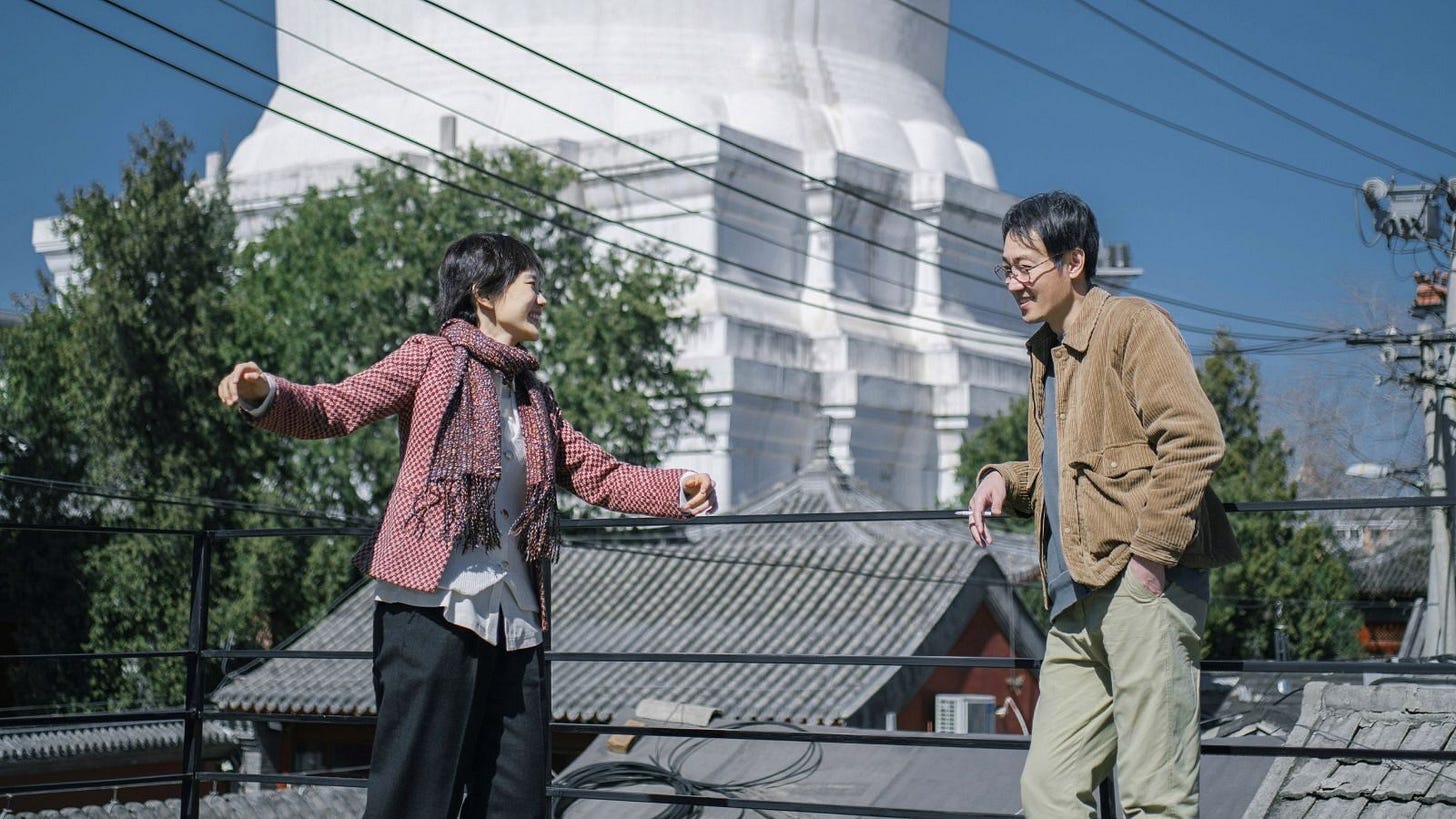The Shadowless Tower (Zhang Lü, 2023)
To commemorate the 2008 Beijing Olympics, China created their own triumphant version of We Are the World. Bringing together dozens of the Sinophone world’s biggest pop stars, they produced Beijing Welcomes You, a pop anthem and accompanying music video celebrating the country’s culture and history perhaps best characterized by its chorus, sung by Jackie Chan standing with his arms outstretched at the Great Wall (as an elementary schooler whose primary media diet at the time was Chinese singing competitions, the song is a core childhood memory). It was a song of aggressive patriotism, of a new world power puffing its chest at its rapidly growing economic and political influence, filled with the false political unity (the song features numerous Taiwanese and Hong Kong singers) and misrepresentative prosperity inherent to such a project.
The song features prominently in a scene from Zhang Lü’s The Shadowless Tower, the most prominent Chinese film to grace the festival circuit last year. Wentong, the film’s lonely, middle-aged protagonist, sings a karaoke rendition during a college reunion. As he and his classmates reflect on their broken marriages, they quietly weep at the song’s declarations of love, friendship, and miracles. A film about untethered, aimless lives in contemporary Beijing, The Shadowless Tower distinguishes itself from other Chinese arthouse exports about curdled national promises by centering on middle-class urbanites. Wentong is a divorced food critic, who lives alone in a tiny, all-white apartment. He’s so depressed that he can barely function, and between his days spent drifting around a bohemian side of Beijing with Wenhui, a young photographer, or trailing his estranged father in BeiDaiHe, he tries to see his precocious daughter, who lives with his sister and brother-in-law. The film’s central metaphor is The White Pagoda, a Yuan dynasty temple that towers over the characters’ neighborhood, but doesn’t cast a shadow. It’s tempting to ascribe political readings onto it (perhaps the specter of unacknowledged Chinese history), but the device functions mostly as an omnipresent, rarely acknowledged rhyme to these characters’ lives, a monument to the suffocating enormity of their disconnect.
The Shadowless Tower is yet another film about the emptiness of city life, elevated by its delicate formal approach and its palpable sense of loss. The film is characterized by emptiness, as its characters, each abandoned by their family at a young age, haunt Beijing’s Xicheng district. Lü began his career as a novelist, and as he slowly reveals the specifics of Wentong and Wenhui’s scars, he movingly contextualizes their strange relationship and the film’s barren atmosphere. He’s also a sneakily deft formalist, often visually manipulating character interactions to convey spiritual loneliness. He displays masterful use of windows and doorways, as seen during a scene of Wentong reading poetry to his daughter, where his face is blocked by the door frame. In other instances, he uses uneven editing rhythms to astounding effect. A somber ballroom-dance sequence cuts from Wentong dancing with an old friend to Wentong dancing alone, with Lü then holding the camera on him until he eventually twirls off-screen.
The Shadowless Tower is available on VOD




